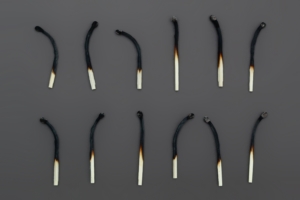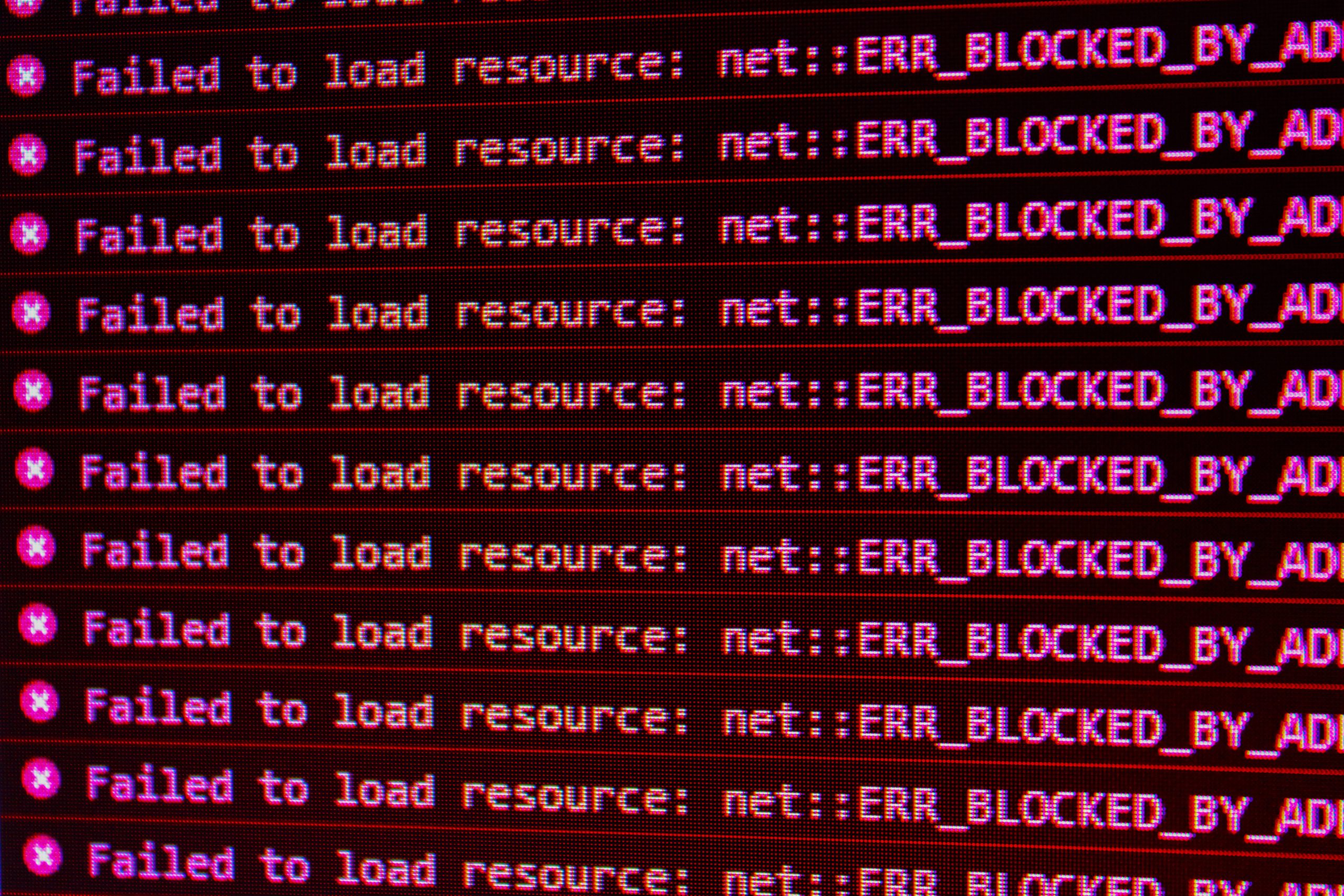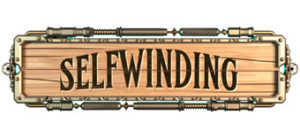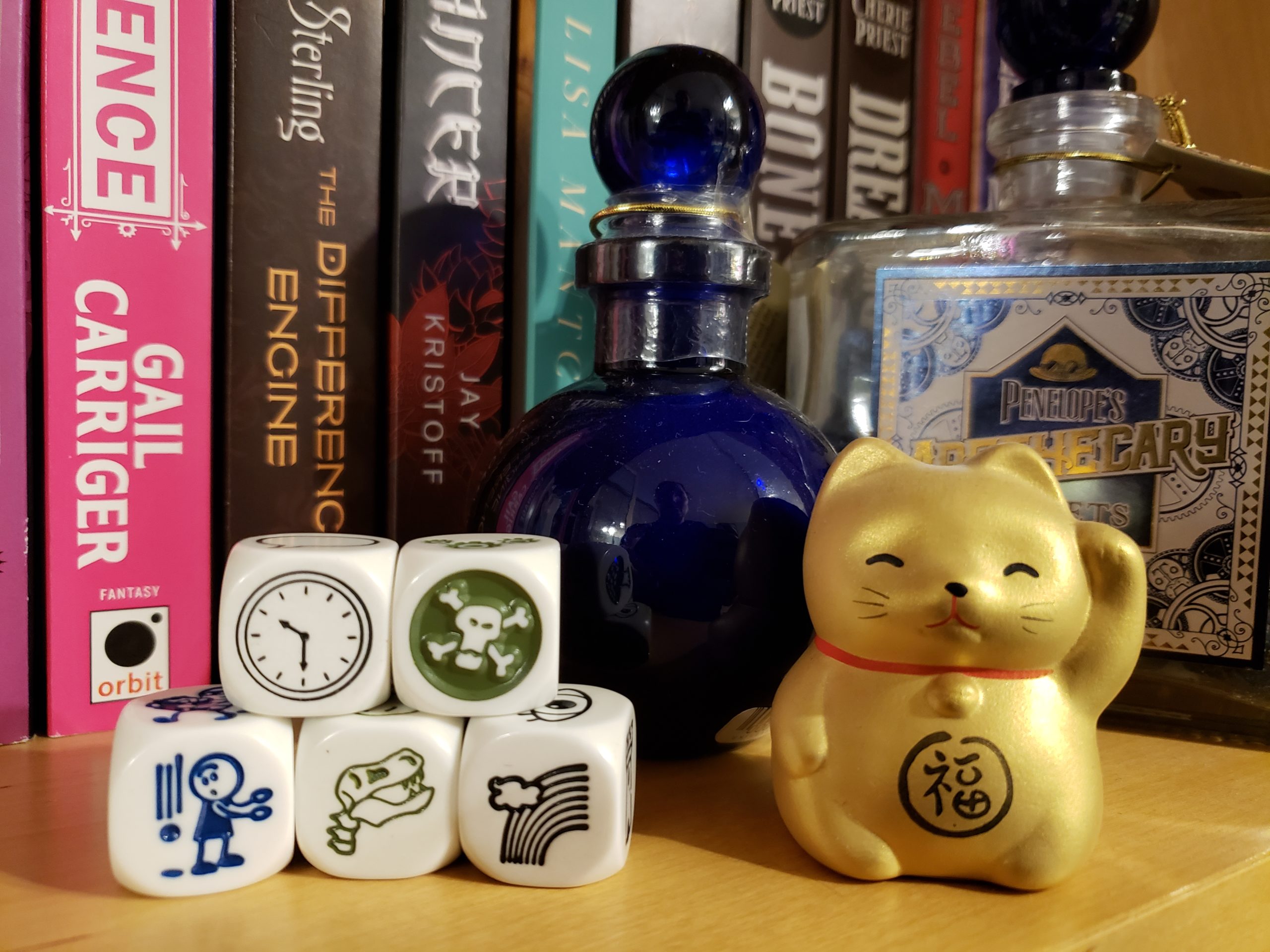If you’ve been following along for the past year, you already know I’ve been taking a long break from novel writing to take care of my parents. With the major illnesses under control, and adjustments and new routines established, I can finally inch back into novel writing. This means refamiliarizing myself with plans, getting back into the characters’ voices, and figuring out what’s been percolating in my head while I’ve been away. In short, it’s a novel writing return!
I know I’m not the only one who’s been in this situation—coming back to a novel after a long (sometimes years long) break—so I wanted to share what I did this month to reconnect with my novel.
Take Stock Before Writing
The first step is all about taking stock and figuring out where you left off. For this novel, it included reading over the outline and making notes where the plot seemed a little draggy. (Turns out in the two years away, the outline did not magically fix itself.)
I have many different parts of this story drafted, but since I’m working from a new outline, I decided to not bother rereading any drafts. I will be incorporating things from previous drafts, but I think I’d prefer to revisit those as I get to each scene since my outline is so detailed.
I also discovered I created a writing schedule, which will help with the next step….
Update the Novel Plan

Photo by Omid Kashmari on Unsplash
Updating the novel plan starts with updating the outline. I only had a few notes to address in the opening chapters, but they required shifting scenes and chapter breaks, which also created a need to update the story map. (The story map is a document that tells me who is in each scene, where it takes place, and which plot threads it involves.)
The novel plan also includes plans for how to write the novel, specifically what my writing schedule will be. The schedule I previously devised had me writing 3–4 scenes per week, and while I aspire to that level of productivity, it’s just not realistic with my other obligations.
Instead, I looked at the estimated word count of each scene and then doubled that number (because I know the chaotic, word-heavy way I draft). Keeping a realistic goal in mind, I decided I am unlikely to write more than 4,000 words per week, so that base schedule has me writing 1–2 scenes per week.
Renewing Voice
Reconnecting to a novel includes reconnecting to the characters. Because it’s been a hot minute since I wrote anything substantial for these characters, I wanted to reacclimate myself to their voices. I picked a few moments and various character combinations to write about and went at it!
Making my novel writing return by starting with some odd moments let me approach the writing at a slower pace while I was still finishing plan adaptations. It also meant I could test some of my plans to see how much I can actually write on a busy day with my new routines and schedules.
Novel Writing Return!
The hardest part of the return is to stop dawdling and get writing. That means officially writing a scene that will—gulp—go into the novel.
So that’s for next month! 😅
(Seriously, updating the outline and story map took longer than I originally thought it would—but no regrets about that time spent! For me, the planning stage is important to keeping my brain on track and untangled as I draft. Other writers struggle with the planning and revision; my writing struggle is drafting.)
I am coincidentally starting my draft in November, though not doing NaNoWriMo. Anyone else setting ambitious writing goals outside of a challenge structure?
For full access to The Write Life and more about what I’ve done to assist with my creative life, sign up on Patreon for $1 or more per month. You’ll also receive a personalized thank you in a future edition of The Write Life.
Welcome writers, readers, and inspiration chasers! Join me as I dip into my prompt resources and select something to explore and share. These prompts are all about inspiration—what they inspire for me and what they inspire for you.
If you’re inspired by the prompt, whether that’s by creating something epic or just warming up for your creative day, I hope you’ll share your creation.
This prompt comes from the book An Apple a Day by Caroline Taggart (published by Reader’s Digest, 2011). This is a collection of idioms and expressions that explores what the phrases mean and some of the history behind them.
Feel free to go wherever the prompt takes you!
Better the devil you know than the devil you don’t. (page 26)
A cowardly one, I’ve always thought, and Richard Taverner’s 1539 translation of Erasmus’s Latin phrase is sexist, too: “An evil thing known is best. It is good keeping of a shrew that a man knoweth.” It’s often the excuse people give for staying in an unsatisfactory job or a relationship because they are frightened of the unknown alternative. Kylie Minogue reiterated this message in her song “Better the Devil You Know.” In it she describes a woman promising to wait for some dreadful man, ready to forgive and forget if he will only stop leaving her. Honestly, Kylie, whatever happened to Girl Power? I suggest you change your locks and move on.
But one man’s cowardice is another man’s prudence, I guess, so although I am advocating “Fortune favors the brave,” you could equally argue for “Look before you leap.” As I said in my Introduction, you can’t rely on proverbs to make all the decisions for you.
Where I started:
Obviously, when I read this prompt, I was immediately inspired to write about literal devils, because why wouldn’t I be?
Working from the direct phrase, I had to consider how a pesky little human might encounter two devils, one she knows and one she doesn’t. The obvious solution (because I watched way too much Buffy the Vampire Slayer at an impressionable age) is a bar or some kind of night club in which humans and demons intermingle (knowingly or unknowingly). I liked the idea of a human who keeps visiting a bar with her demon guide, looking to meet a specific kind of devil. (Maybe a devil who will make a deal with her?)
Being a vampire girl at heart (see re: Buffy), it made sense that Avis’s demonic companion be someone equally as tortured, so I selected a vampire for her guide. I liked adding a twist that their relationship is ultimately fraught no matter what happens to Avis because despite being friends, one of them is a hunter and the other is food.
Originally posted for the Story Kernels Patreon December 15, 2022.
What I wrote:
Avis leaned on elbows over the table, squinting in the low light of the club. The flickering candle illuminated her neck, turning it nearly translucent and making her veins stand out even more. “Who’s that?”
Nab flicked his eyes away from her throat. “Which one?”
“By the door.” Avis’s tone sounded annoyed by his inattention, but she’d never appreciated what it was like spending time with someone so full of blood. “The one in the red leather jacket with the fringe. Gold hoop earrings. Blond hair.”
“Oh.” The specifics were needed as there were several people by the door in red leather. Not that surprising at the Devil’s Club. “Summer, I think. Sumner? Something like that.”
“Introduce me?” Those two words were one day going to get Avis killed, but Nab never had any inclination to deny them. Afterall, if he ever delivered Avis to someone who wanted her, he’d get some kind of favor in return. (And he wouldn’t have the displeasure of losing his control and being the one to do her in.)
“Another devil to add to your list?” Nab asked in weak protest. He was already on his feet, hand extended to help her up.
She didn’t take Nab’s hand, keeping her eyes on the door and her quarry. “Bring him here?”
It wasn’t a good idea—it was never a good idea—but humans often only acted on the worst ideas.
He shrugged, said, “Your funeral,” and hoped he was once again proven wrong.
Now it’s your turn:
What’s the devil your character knows and the one they don’t? How do they navigate between those devils? Is there another portion of this prompt that speaks to you in a different way?
If you enjoyed this prompt and would like another, the October prompt on Patreon inspired a story about a woman dealing with a dithering memory.
Ask a publishing professional what you should write next, and they’ll never tell you. “Write what you want to write,” they’ll say. They might say writing what you want will produce better results, or that no one can guess a trend. But there’s another aspect I’ve never heard someone say but am now realizing is essential to the creative process: You have to trust your gut.
Trusting your gut as a writer applies to many different aspects of the creative process. You have to trust your gut when you’re drawn to write your next project. Or when you’ve chosen a weird name for your main character. Or when your characters go off your planned course, but it feels inevitable and right in your gut.

Photo by Austin Neill on Unsplash
There’s also a point when all your research looking for the right home, agent, or editor for your manuscript ends, and you just have to trust yourself to make the right choice. Sometimes you just feel good about something, so you send your email off into the world because it feels like the right time, the right person, and you hope.
That hope is part of the publishing process, too. It’s the thing that keeps writers going after a stack of rejections and years of work and refinement. It’s what pushes writers to write the next thing, submit the next story, and do it all again, despite the difficulty, frustration, and feelings of failure. But we keep going because something in our gut keeps pulling us forward, and we keep trusting it to lead us in the right direction.
I’ve been too in my head about writing recently. I’ve been too caught up in the “right way” to start a novel. Too busy analyzing where to best spend my time. Too lost thinking about writing instead of slapping words on the page like a writer. I haven’t been spending much time listening to my gut, and that has got to change.
I’ve had a lot of distractions this month (mostly in the form of covid), so I haven’t made much progress on this change, but knowing what my next steps should be is making me feel more confident about my writing future.
How about you? Do you trust your gut when it comes to writing? Any suggestions on how I can get better at trusting my gut again?
For full access to The Write Life and more about what I’ve done to assist with my creative life, sign up on Patreon for $1 or more per month. You’ll also receive a personalized thank you in a future edition of The Write Life.

Photo by tabitha turner on Unsplash
This month has been A. LOT. There’s no other way to describe it, honestly. When life becomes a lot, there’s often nothing you can do about it except hold on, ride through, and hope you can figure out how to get some writing done while everything else is happening.
Many other writers would (and should) take a break from writing when faced with all the chaos and uncertainty I dealt with this past month. I find solace in maintaining my writing streak and keeping one element of my life somewhat steady, so I continued using daily prompts as a low stress way to take a break from writing while continuing to write regularly.
I also made progress drafting a new writing workshop about how to evaluate writing advice and decide what fits your life and what can be discarded. (Look for that in 2024.)
And I spent my time not stressing about life to stress about getting ready for DragonCon—which is happening right now!
If you’re hanging out around Atlanta, you’ll be able to find me at these fine panels over the weekend (schedule subject to change, as is the will of DragonCon):
FRIDAY
-
- 11:30AM Stargate: The TV Movies and Beyond
- 2:30PM Coping Strategies in Military Sci-Fi Media
- 7:00PM It Was Kang All Along
SATURDAY
-
- 11:30AM Mythology and Religion in the Worlds of Stargate
- 7:00PM BFFs in the MCU
SUNDAY
-
- 8:30PM Firefly: It All Comes Out in the Wash
MONDAY
-
- 11:30AM Titans: Brother Blood
- 2:30PM Guardians: Rocket’s Story
I’m on exclusively fan-focused panels this year, though I’m sure I’ll discuss some writerly worldbuilding during the mythology and religion panel, and I’ll be talking about the importance of relationships in action stories while discussing Marvel friendships, and I’m already planning a little English 101 exploration of protagonists to lead off the panel on Rocket Raccoon. (They may be fan panels, but I always bring my writing game.)
If you are someone who follows me on the internet and are able to find me at DragonCon, don’t be shy about saying hello. I’m always happy to chat with fellow writers and nerds.
For full access to The Write Life and more about what I’ve done to assist with my creative life, sign up on Patreon for $1 or more per month. You’ll also receive a personalized thank you in a future edition of The Write Life.
Welcome writers, readers, and inspiration chasers! Join me as I dip into my prompt resources and select something to explore and share. These prompts are all about inspiration—what they inspire for me and what they inspire for you.
If you’re inspired by the prompt, whether that’s by creating something epic or just warming up for your creative day, I hope you’ll share your creation.
This prompt comes to you via the book Complete the Story released by Piccadilly USA Inc. The prompts in this book give you the first few lines of a story and lined paper for you to continue writing.
Feel free to go wherever the prompt takes you!
Ever since the creature crawled out of the lake, the whole town had begun to show their true colors. The uncertainty, the fear, and the fascination combined into a potent cocktail that brought out the best in some, the worst in others. The creature was…
– page 39
Where I started:
I really liked the first sentence of the prompt—especially if I turned the metaphoric idiom about “true colors” into something literal. After discarding what wasn’t as inspiring, I had to decide what creature crawled out of the lake, who found the creature, and what colors it could make people turn. (And why—what do those colors mean?)
I quickly decided the colors must mean something about the person. Maybe what drives them, or what kind of person they are. I also liked the idea that a person’s color could change through their actions—so that exists in my mind, even if it isn’t on the page in this snippet.
I wanted my creature to be small, and for some reason lake + creature immediately made me think of a reptile. Adding the color-changing features, it wasn’t difficult for me to decide my creature was a chameleon. (Which also meant it was scoopable, another quality I liked for this little visitor.)
I usually spend a lot of time writing about adults and decided to do something different. Since E.T. is imprinted on my soul, I decided a child protagonist who finds an extraordinary creature and hides it from the adults might be fun to explore.
With all that decided, I knew where I wanted to start.
Originally posted for the Story Kernels Patreon January 12, 2023.
What I wrote:
The little chameleon curled in the warmth of Charlene’s aquamarine-stained palms. Cupped in a cocoon that blocked the chill blowing off the lake, his tail flicked over her skin like a happy tickle. He should not have been outside at this time of year! Chameleons are cold blooded, and this little guy was lucky a wandering ten-year-old well-educated in reptiles spotted the glimmering red body at the shoreline. Or else he would have frozen in a matter of minutes!
Charlene tucked chapping hands to her chest, wrapping them beneath the rainbow scarf she had knitted all on her own. Sticks and rocks crunched beneath her boots as she trekked the hill back to the house her dads had rented for fall break.
She might have to take a serious scrub to her hands, since whatever was on the chameleon’s belly wouldn’t rub off, but she’d worry about that after she found a jar and a warm place to keep her new friend. The desk lamp in her room should work for heat. She could come out and grab some sticks and swipe a few leaves of lettuce from her salad at dinner. Bugs might be harder to find, but that spider in the bathroom was surviving on something.
On the porch, Charlene peered into the hole of her cupped hands, the crimson glistening even in the diluted light.
“Ruby,” she decided in an instant. “We just need to make sure Daddy doesn’t find you.” Daddy, unfortunately, didn’t understand a thing about lizards.
Now it’s your turn:
What creature crawls out of a lake? What does the creature bring out in those closest to it? What about those who know little about it? Are the colors the townspeople experience literal or metaphoric?
If you enjoyed this prompt and would like another, the August prompt on Patreon inspired a story about another unusual creature, this one a celestial feline who seems literally impossible.
No daily writer even wants to think the word “burnout.” But at the end of June someone directed that word at me, and I had to accept that part of my recent problem is related to burnout.

Photo by Anne Nygård on Unsplash
It was pointed out that the last year has been, um, stressful. Putting my career on hold to take care of my family was one kind of stress, but then coming back to my job with my hair on fire, desperate to jump in and make things work better was another kind of stress on top of that. Add to that daily struggles, my own chronic illnesses, isolation and loneliness, and the state of the world—it’s been a lot. So, yes, I am burned out, even if it’s not the creative burnout I fear. (And that’s not to say that all the other burnout isn’t sapping my creative energies.)
I decided to take the end of June to clear my plate, so I could spend as much of July as possible relaxing and refueling.
There was one problem with my plan—I’m a daily writer. I can’t stop writing. So, if I’m not working on my novels, short stories, or anything else that is “for work,” what can I write while still taking this very necessary break?
A Writing Break for Burnout
I decided the solution was daily prompts.
I obviously enjoy writing to prompts and had first thought to dig into my vast resources and pre-select a few that jive with me. But that might feel a little too much like what I do monthly on Patreon and might encourage me to “do something” with whatever I write. The point right now is to not do anything. To keep up my writing practice without trying to set a goal, make something perfect, or even refine it in any way. If I stumble across an idea I want to develop later, great, but everything I’m writing currently should come with guilt-free disposability.
I downloaded an app promising daily prompts and resolved to use them regardless of how much I liked the prompt on its own. And the results? Have been pleasantly surprising!
Knowing whatever I write is meant for My Eyes Only has provided much more freedom than I usually experience while writing. I haven’t needed to worry about coherence and can jump from thought to thought or moment to moment without trying to find a transition or make a note to figure it out later
There’s also no pressure to write anything of substance or quality because no one is going to see it. I don’t have to release it for any audience or please anyone with what I’m writing. Everything can suck! There are no right answers! These are just words to keep my writing streak alive and keep myself connected to creativity!
Having the rule to write to every prompt, even if it’s not one that really engages me is another form of freedom. The first question I ask the prompt is “what will I do with it?” instead of “do I want to do something with this?” That subtle twist of language shifts my focus from me to the writing (and from the future to the present) and has allowed me to write something for every prompt.
Bonus: because I’m not editing and am just putting words on a page, I can complete my 250-word daily minimum in 10 minutes without any fuss!
More and more I’m feeling like using a daily prompt randomly supplied might serve as a good warm-up for my normal writing routine or as a way to reconnect when I’m feeling out of sorts. Has anyone else tried using daily prompts like this? What’s your experience been like?
For full access to The Write Life and more about what I’ve done to assist with my creative life, sign up on Patreon for $1 or more per month. You’ll also receive a personalized thank you in a future edition of The Write Life.
After an up-and-down month in May with some extreme writing highs and lows concurrent with my vacillating mental health, I decided June needed to be about kindness. Mostly that was kindness in the way I treated and talked to myself, but I also allowed for kindness related to my writing. This writing kindness wasn’t just about writing kind things (though I did a lot of low stakes writing in June), it was about being kind to my writing life, accepting things for how they are, and recontextualizing what productivity and progress means.

Photo by Dayne Topkin on Unsplash
The writing life is often NOT kind. We spend hours isolated, chipping away at our ideas, only to have to rewrite and revise and polish (and then rewrite and re-polish)—then to be told all the things we did wrong, or could do better by editors, agents, and audience. The stories we actually manage to finish and publish can be our dearest creations and still be met by rejection or—worse—apathy. The writing business is not kind, which means that writers need to be as kind to ourselves as possible.
What does writing kindness look like in terms of a writing life?
First, it means throwing out expectations and rules dictating what a writing life “should” be.
Do you have to write every day? Nope.
Do you have to write 1,000 words a day? Also, no.
Do you have to write for at least an hour every time you write? Very no.
Write from an outline?
Use Scrivener?
Draft in a Moleskine notebook with your literal blood, sweat, and tears?
Hopefully you’ve caught on that the answer to all those questions is no—unless of course any of those things are part of YOUR writing process. But none of them are part of every writing process and none of them mean you are a “real” writer simply by subscribing to them.
Beyond putting aside what you think a writing life should be, an important writing kindness is changing what you’ll accept as productivity.
Some days writing productivity might mean writing 1,000 words. Other days writing productivity might mean thinking about your story in spare moments as you’re in the shower, folding clothes, or sitting in traffic. Dreaming up character backgrounds and names, working through worldbuilding details, outlining or researching—all of those things can be writing productivity!
Writing does not always mean writing because a lot of writing is thinking. It’s coming up with options, and then making decisions. And to come up with those options, you have to spend time thinking.
If you happen to be someone driven by word counts (cough, me, cough), then you can write down those options and thinking and brainstorming, so you can “get credit” for that productivity, but YOU DON’T HAVE TO! Be kind to yourself! Be kind to your writing life!
Another way to treat your writing life with kindness—and this is one I’m looking to develop more—is by surrounding yourself with supportive people.
Find readers and other writers who will tell you what you’ve written is wonderful and who will encourage you to keep going. Find someone who is so excited for the idea you’re currently obsessed with and check in with them to feed from their enthusiasm. Find a writing group that is interested in what you’re writing. Find people you can talk to about your work. Don’t accept jerks or critics into your creation process! Surround yourself with kindness and wear that kindness like armor and a shield to protect yourself from all the times writing is not kind.
It’s good to be kind to yourself and your writing life because so many other things will not be kind. Writing kindness is one way writers can cope with the rejection and isolation that’s baked into the writing process and find the motivation to keep going.
For full access to The Write Life and more about what I’ve done to assist with my creative life, sign up on Patreon for $1 or more per month. You’ll also receive a personalized thank you in a future edition of The Write Life.
Welcome writers, readers, and inspiration chasers! Join me as I dip into my prompt resources and select something to explore and share. These prompts are all about inspiration—what they inspire for me and what they inspire for you.
If you’re inspired by the prompt, whether that’s by creating something epic or just warming up for your creative day, I hope you’ll share your creation.
This prompt comes from The Lover’s Dictionary by David Levithan. The words defined in The Lover’s Dictionary create a story, and just as Levithan uses those definitions to construct a novel, so too can you take a word and definition and retool it for your own creative purposes.
Feel free to go wherever the prompt takes you!
ersatz (adj)
Sometimes we’d go to a party and I’d feel like an artificial boyfriend…
Where I started:
The word “ersatz” is forever linked in my memory to Do Androids Dream of Electric Sheep? by Phillip K. Dick, so this prompt immediately brought to mind replicants and androids.
The rest of the prompt—an artificial boyfriend—reminded me of an idea cultivated by my writing group. We wanted to put together an anthology of stories based around the people who rent artificial friends. These android friends can fill any need, the person in the friend group who takes all the pictures, the best friend of a shy individual, or an impressive date to a high school reunion… which is the direction I took the prompt for this snippet.
A high school reunion is a place where a person wants to be seen as visibly successful. Short of being crowned during the proceedings, that typically translates to an enviable physical appearance and a stable romantic partner. Many other rom-coms have already trod the path of bringing a fake date to a high school reunion, I just put more emphasis on the “fake” part of the scenario, giving dear Kay her own artificial boyfriend.
(One day I am putting together this anthology—mark my words.)
Originally posted for the Story Kernels Patreon Oct 7, 2022.
What I wrote:
Kay smiled broadly as she stepped under the balloon archway. Welcome Back Sycamore High Class of ’99 screamed from nearly every wall of the hotel ballroom. Clint’s arm kept her upright as they approached the check-in table.
This was such a bad idea.
“Everything’s fine,” Clint whispered. His voice modulated perfectly so only Kay could hear him. “We’ll stay an hour, make sure to be seen by the right people, and I’ll sing all your praises.”
Kay clutched his hand, which suddenly felt smoother and less lifelike than it had when she’d picked him up at the Fast Friends facility. “You know not literally, right? Like, don’t sing.”
Clint chuckled softly, his smile pleasant and perfect, and exactly the kind of man Kay’s high school friends had expected her to marry. “It’s an expression, Kay. I promise, FF’s programming is flawless.”
No one near them reacted, everyone lost in their own conversations as the line inched forward. Still. “Don’t say the p-word,” Kay muttered.
“Then don’t question my p-word.”
The man in front of them turned around abruptly, eyes wide, and Kay laughed through her intense blush. She could only imagine what p-word he thought they meant.
Now it’s your turn:
What might be fake in your scenario? Who is the artificial boyfriend and how are they artificial? Is the artificial feeling a constant or situational?
If you enjoyed this prompt and would like another, the June prompt on Patreon inspired a story about a woman silencing the petty man who had imprisoned her.
Even though I’m a daily writer, I go through highs, lows, and specific cycles in which creation might be easier or more difficult. These cycles boil down to three distinct writing modes that define my ability to create at any given time.
- Consistent—when my production and creative output feels stable and constant and I’m happy with what I’m doing and don’t feel burned out after writing.
- Stagnant—when I’m not writing much because I feel creatively drained and/or have low energy; when I’m not making progress on writing projects or otherwise feel negative toward my work because I’m not seeing the results I want. (This description makes me feel like a toddler throwing a tantrum because I need a nap… which is probably what I need when I’m feeling stagnant, to be honest.)
- Overload—when I have huge days of creative production, writing a large number of words or making a lot of progress, but ultimately burn out when the juice is kaput.
Naturally I love it when I’m consistent. Consistency is a blessing. It’s like having the Creativity Gods shine upon you as they keep refilling your sweet head with more words and ideas to spill from your fingers daily, on a schedule, without fail. I cultivate consistency through practices like writing at least 250 words per day and planning, planning, planning, but even with that rigor, forethought, and routine, my writing life can still fall stagnate. 🙁
For the past few months I’ve been caught in a cycle, swapping between the Overload and Stagnant writing modes. It starts with a couple amazing days, churning out words quickly, working for longer periods of time, and writing well above my daily average. The choices I make and the words I use are exactly the right words to convey the meaning and tone of the piece. I can connect ideas in relevant and interesting ways. On these days, I feel great about the work I produce and get it in my head that everything in my writing life is about to turn around and it’s all blue skies!
… and then the stagnation hits.

Photo by Krystian Piątek on Unsplash
I’m exhausted after all the production. Or I’ll have finished whatever bit inspired my stint in the Overload mode and have difficulty finding my way into the next thing. And I’ll try and try and try to write, but struggle to put words on the page, make relevant progress, or feel good about what I’m writing. It sucks when my writing goes stagnant, but I am—actually—still writing. It’s a struggle to put words on the page, but I’m getting at least my 250 words in. I might hate 90% of the words I write, but there’s a few sentences that have something interesting in them, or is the idea I want to convey, even if it uses all the wrong words to get there.
While the Stagnant mode is frustrating and I kind of hate it, I have to admit: it is a mode of writing. When I’ve rested enough, or my brain has refocused and I can slip back into Overload or Consistency, I usually find that the Stagnant Mode days left me with something usable.
That something is what writing is about. Writing is rewriting and revising. Every time I put down the wrong words, I get closer to the right words, and those stagnant, painful days of writing are unfortunately part of the process.
For full access to The Write Life and more about what I’ve done to assist with my creative life, sign up on Patreon for $1 or more per month. You’ll also receive a personalized thank you in a future edition of The Write Life.
Most jobs have defined parameters: go to work, perform specific tasks at work, go home. Even jobs performed from home or that require overtime still fall into similar routines. There can be a start and stop time—an on/off switch, if you will—work defined by tasks or time, and there is always an end.
With writing? Not so much.
Writing has a habit of encroaching on everything. You’re in the shower, lathering in shampoo and—BAM—you have the solution to a plot hole. You’re making dinner, sautéing veggies and—WHAM—you finally have inspiration for your title. You’re trying to fall asleep, letting all your thoughts empty out of your head and—POP—the perfect line of dialogue appears. No matter what you’re doing, writing is happening in some corner of your brain and it’s going to jump up and demand attention when you’re least prepared.
But the opposite is true, too, isn’t it? When we sit down to write, our real life comes in to distract us. That could be in the form of remembering unfinished tasks on our to-do lists and things we need to do or buy or clean, or in the form of our loved ones poking their heads into our writing time with well-meaning interruptions that still derail our train of thought.
Writing doesn’t come with an on/off switch, and it can be difficult to switch in and out of writing mode to maintain a healthy work/life balance. (I doubt I’m the only freelancer who experiences this problem related to other work as well since sometimes those shower thoughts are about the manuscript I’m editing or the email I need to send or how to revamp my Patreon.)
Working from home doesn’t help this situation either because there is literally no separation between my workspace and my home space. They’re the same space!
I was at the end of my rope about this problem, so this month I tried to create some separation by utilizing a vacation home I occasionally have access to. I got to have a routine, a short commute, and a quiet, uncluttered workspace that has nothing to do with my home life! And when I went home at the end of my workday, I didn’t feel nearly as much pressure to keep working. I also felt less anxiety related to “you didn’t do enough” because I’d had more success getting things done during regular work hours.
Since the on/off switch for writers is mostly broken, writers have to try harder to create boundaries around work life and home life. A room of one’s own is a great way to do that, but not everyone has access to a vacation home (and I don’t even have access to it all the time). There are other boundaries that can be set—a schedule, a special place to write (even if that’s just moving from one side of the desk to the other), and other routines (a special snack, a lit candle, noise-cancelling headphones).
I’m trying to keep all those tricks in mind as I transition back to mostly working from home. I feel like this month has been a good reminder of the importance of separating work from home, and I’ll be looking for more opportunities to get out of the house and actually separate work from home.
Speaking of, anyone want to join me at a coffee shop to write?
For full access to The Write Life and more about what I’ve done to assist with my creative life, sign up on Patreon for $1 or more per month. You’ll also receive a personalized thank you in a future edition of The Write Life.
Welcome writers, readers, and inspiration chasers! Join me as I dip into my prompt resources and select something to explore and share. These prompts are all about inspiration—what they inspire for me and what they inspire for you.
If you’re inspired by the prompt, whether that’s by creating something epic or just warming up for your creative day, I hope you’ll share your creation.
This prompt comes from Rory’s Story Cubes distributed by Zygomatic studios. The simple pictures are meant to inspire a story. How you use each image (or connect them together) is up to you. The dice I’ve used today are a mix of the Classic, Voyages, and Actions Sets.
Feel free to go wherever the prompt takes you!

Where I started:
Clock + Dinosaur = Time Travel!
(Really, did you expect my brain to go anywhere else?)
With time travel as a starting point, I had to consider what was happening in the other images and how to interpret them. The bottom left cube with the falling object made me think of a crash, so potentially a crash-landing in a time machine. The skull and cross bones might not be pirates (maybe) and could just indicate danger, and the rainbow for me meant that things would ultimately be well. Maybe even funny. (I like funny, we’re going funny.)
So, what time travelers could be in danger, crash, but ultimately be okay? I decided to use my already established time-traveling trio from a novel-in-planning. Robin and Griffin have been partnered for years, but Henry is new to their crew, swiped from another timeline in which he and Robin have the same parents, though neither of them has a sibling….
Originally posted for the Story Kernels Patreon Nov 17, 2022.
What I wrote:
They rematerialize in the timeline with an inefficient clunk that rocks Henry against the safety restraints—apparently there is a reason they have an outdated harness in this thing.
Before he can ask any questions, Robin’s down the ramp, cycling open the hatch. Verdant, damp, mossy air floods the cockpit. As many different times as he’s visited, he’s never smelled something so… untouched.
“Griffin?” Robin’s muffled voice drifts forward from the exit ramp. “Remember when I said, ‘I don’t care where we go, just get us out of here?'”
Griffin’s cheeks shade pink, eyes sliding to Henry in the co-pilot’s seat, a vaguely guilty look pursing his lips. His voice is steady when he replies, “Yes, dear. I seem to recall that.”
The monitors in front of him are as outdated as the restraints, and Henry can’t make heads or tails of the readings to get a grasp on the date or place. He releases his harness, half rising from his seat to see what his other self is looking at and what has Griffin looking so guilty.
Robin comes back up the ramp to hang over the back of the passenger seat. “I changed my mind, Griff, I care. There’s a goddamn dinosaur out there.”
Now it’s your turn:
What do the images mean to you? Does the clock indicate time travel or just a specific time (maybe a countdown)? Is the dinosaur skeleton representing something alive or dead? What’s the rainbow hanging over your story? How do multiple images come together to inspire you?
If you enjoyed this prompt and would like another, the April prompt on Patreon is a different bit of Robin’s history, exploring the first time she time traveled back home and discovered her whole world had changed.
I’ve been struggling in my creative life because I’ve been struggling with my mental health.
Creativity is connected to wellness. Dysfunction comes quickly when your body or mind isn’t in its usual form. It’s easier to become distracted, to lose motivation, to get frustrated, to feel lost, to forget why you were doing this in the first place when your mental health is suffering. You can wind up feeling the work of writing and publishing and none of the joy.
Getting advice and support for these particular problems can be a challenge because not all resources are meant to support writers with chronic issues. For all the positive thinkers out there, we can appreciate you, but you don’t seem to understand what it’s like for us writers dealing with chronic illness.

Photo by David Pupaza on Unsplash
Blocks formed by chronic illness aren’t a mindset problem. We’re not “focused on failure” or failing to see silver linings. Sometimes we physically cannot “write through it.” Chronic illness blocks start by preventing writers from getting to the page when we have the desire to write.
- It is physical pain stopping us from typing at the computer, or sitting at a desk, or holding a phone.
- It is a migraine forming when we look at a glowing screen.
- It’s seizing or aching muscles and joints that make it difficult to hold a pen or perform small motor functions.
- It’s a too-active brain that struggles to settle into a moment.
- It’s an autonomic sleep response that makes us drowsy to avoid stress.
It’s an overwhelming concern that this will never end, that nothing will change, that we have no control over what happens. In short: it is hopelessness, which cannot be overcome by an aphorism and a sunny attitude.
Mindset is part of the solution—because accepting the truth of a situation is part of dealing with chronic illness and mental health—but it’s a small part of the solution. The real solution is developing a well-stocked kit of tools and strategies to help mitigate the blocks caused by chronic illness and to accept the days when you have to call it quits.
My toolbox for anxiety and a lack of focus includes bookmarked ambient mixes and ASMR YouTube videos, Lifesavers and chocolate, very cold water, taking off my socks, updating tracking information and schedules (numbers and data!), and many, many other things designed to focus my thoughts, trick my anxiety, or ignore my hopelessness enough that I can fumble my way to productivity. (And some days part of my toolbox is communicating with others so they’ll understand when I shut off all notifications because omg even one will derail me.)
Having a fully stocked toolbox is a huge help, but it may not “fix” things, and I often find myself rooting inside a near empty box, trying to find one last ditch thing that might pull my brain together. Those are the days when I have to accept my situation and be satisfied with my minimum workload being achieved. Some days the minimum is enough.
For full access to The Write Life and more about what I’ve done to assist with my creative life, sign up on Patreon for $1 or more per month. You’ll also receive a personalized thank you in a future edition of The Write Life.




